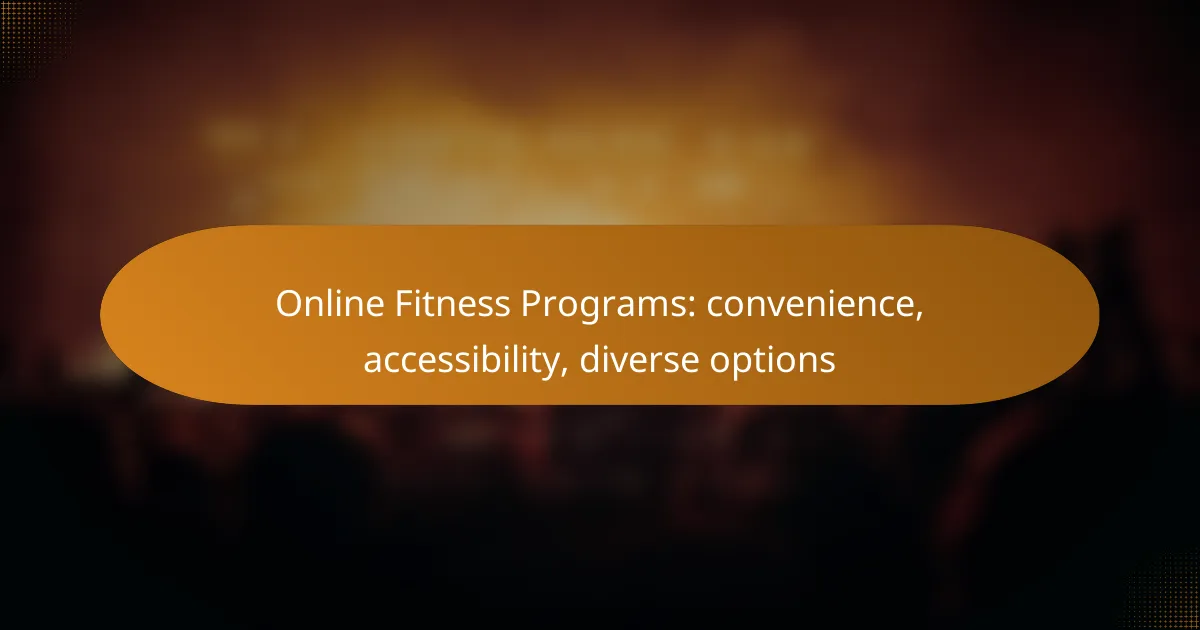Martial arts programs tailored for self-defense emphasize practical techniques applicable in real-life scenarios, with styles like Krav Maga, Brazilian Jiu-Jitsu, and Muay Thai offering distinct advantages. When selecting a style, it’s essential to consider your personal interests and goals, whether they involve fitness, competition, or self-defense. Typically, classes are structured to include warm-ups, technique instruction, and practice through sparring or drills, ensuring a safe and effective learning environment.

What are the best martial arts programs for self-defense in the US?
The best martial arts programs for self-defense in the US focus on practical techniques that can be applied in real-life situations. Popular styles include Krav Maga, Brazilian Jiu-Jitsu, and Muay Thai, each offering unique advantages for self-defense training.
Krav Maga for practical self-defense
Krav Maga is designed specifically for real-world self-defense scenarios, emphasizing quick, efficient techniques to neutralize threats. It incorporates elements from various martial arts and focuses on instinctive movements, making it accessible for beginners.
Training typically includes situational awareness, defense against armed and unarmed attackers, and techniques for escaping holds. Classes often simulate realistic attacks, helping students build confidence and reaction time.
Brazilian Jiu-Jitsu for ground defense
Brazilian Jiu-Jitsu (BJJ) is effective for self-defense, particularly in ground situations. It teaches practitioners how to control opponents using leverage and technique rather than brute strength, making it suitable for individuals of all sizes.
Students learn grappling techniques, submissions, and escapes, which are crucial for defending against larger attackers. BJJ classes often include sparring sessions, allowing students to practice techniques in a controlled environment.
Muay Thai for striking skills
Muay Thai, known as the “Art of Eight Limbs,” utilizes punches, kicks, elbows, and knees, providing a comprehensive striking skill set for self-defense. Its focus on powerful strikes and conditioning helps practitioners develop both offensive and defensive capabilities.
Training involves pad work, bag drills, and sparring, which enhance timing, distance management, and reaction speed. Muay Thai can be particularly beneficial for those looking to improve their striking skills and overall fitness while learning effective self-defense techniques.

How do I choose a martial arts style based on my interests?
Choosing a martial arts style involves assessing your personal interests, goals, and the specific benefits each style offers. Consider what you want to achieve, whether it’s fitness, competition, or self-defense, to find the best fit for you.
Consider goals: fitness, competition, or self-defense
Your goals play a crucial role in selecting a martial arts style. If your primary aim is fitness, look for styles that emphasize physical conditioning and endurance, such as Kickboxing or Muay Thai. For those interested in competition, styles like Brazilian Jiu-Jitsu or Taekwondo offer structured tournaments and ranking systems.
If self-defense is your main concern, consider styles that focus on practical techniques and situational awareness, such as Krav Maga or Judo. Each goal requires different training approaches, so clarify your priorities before enrolling in a class.
Explore styles: Karate, Taekwondo, Judo
Karate is a striking martial art that emphasizes punches, kicks, and kata (forms). It is well-suited for those seeking discipline and self-improvement, with a strong focus on mental and physical development. Classes typically include a mix of sparring and forms practice.
Taekwondo is known for its dynamic kicking techniques and fast-paced sparring. It is an Olympic sport, making it appealing for individuals interested in competition. Training often includes both traditional forms and practical self-defense applications.
Judo focuses on throws, grappling, and ground techniques, making it effective for self-defense and competition. It teaches how to use an opponent’s force against them, which can be advantageous in real-life situations. Judo classes often involve partner drills and live sparring to develop skills.

What is the typical class structure in martial arts programs?
The typical class structure in martial arts programs generally includes a warm-up, technique instruction, and practice through sparring or drills. This structured approach helps students build skills progressively while ensuring safety and effectiveness in learning self-defense techniques.
Warm-up and stretching routines
Warm-up and stretching routines are crucial for preparing the body for physical activity and reducing the risk of injury. These sessions usually last around 10 to 15 minutes and may include dynamic stretches, light cardio, and mobility exercises specific to martial arts movements.
Instructors often emphasize the importance of warming up the major muscle groups used in martial arts, such as legs, arms, and core. Students should focus on their breathing and ensure they are adequately warmed up before proceeding to more intense activities.
Technique instruction and practice
Technique instruction and practice form the core of martial arts classes, where students learn specific moves, strikes, and defensive techniques. This segment typically lasts 20 to 30 minutes and involves demonstrations by instructors followed by guided practice among students.
Students are encouraged to ask questions and receive feedback during this phase to refine their skills. Practicing techniques in pairs or small groups allows for hands-on learning and helps reinforce proper form and execution.
Free sparring or drills
Free sparring or drills are often included towards the end of the class, lasting about 15 to 25 minutes. This segment allows students to apply what they have learned in a controlled environment, enhancing their reaction time and adaptability in real scenarios.
While sparring, students should adhere to safety guidelines, such as wearing protective gear and respecting their partner’s skill level. Drills may also focus on specific scenarios or techniques, ensuring that students can practice under varying conditions and improve their overall proficiency.

What are the benefits of joining a martial arts program?
Joining a martial arts program offers numerous advantages, including improved physical fitness, enhanced self-discipline, and increased self-confidence. These benefits can significantly impact personal development and overall well-being.
Improved physical fitness
Martial arts training provides a comprehensive workout that enhances cardiovascular health, strength, flexibility, and coordination. Participants often engage in various exercises, including sparring, drills, and conditioning, which can lead to noticeable improvements in fitness levels.
Classes typically cater to different skill levels and can be adjusted to meet individual fitness goals. Whether you are looking to lose weight, build muscle, or simply stay active, martial arts can be an effective and enjoyable way to achieve your objectives.
Enhanced self-discipline and focus
Martial arts training requires consistent practice and dedication, fostering a strong sense of self-discipline. Participants learn to set goals, manage their time effectively, and push through challenges, which can translate to other areas of life, such as academics or career.
The structured environment of martial arts classes encourages focus and concentration. As students progress through different belt levels, they develop the ability to concentrate on tasks and maintain discipline, which is essential for mastering techniques and achieving personal milestones.
Increased self-confidence
As individuals progress in martial arts, they often experience a boost in self-confidence. Mastering new skills and techniques can create a sense of accomplishment, helping practitioners feel more capable in various situations.
Additionally, martial arts training often emphasizes self-defense, equipping individuals with the skills to protect themselves. This knowledge can lead to greater confidence in one’s ability to handle potentially dangerous situations, further enhancing overall self-esteem.

What prerequisites should I consider before enrolling?
Before enrolling in a martial arts program, consider your physical fitness level, age, and any prior experience. These factors will help ensure you choose a class that matches your abilities and goals.
Physical fitness level
Your physical fitness level plays a crucial role in determining the right martial arts program for you. If you are new to exercise, look for beginner classes that focus on foundational skills and gradually increase intensity. For those with a higher fitness level, advanced classes may offer more challenging techniques and sparring opportunities.
Consider your cardiovascular endurance, strength, and flexibility when selecting a program. Many schools offer assessments or introductory classes to help gauge your readiness. Aim to find a balance that pushes you without risking injury.
Age and experience requirements
Age and experience requirements can vary significantly among martial arts schools. Some programs cater to children, while others focus on adults or mixed-age classes. Check the school’s guidelines to ensure you enroll in a class appropriate for your age group.
Experience levels are typically categorized as beginner, intermediate, or advanced. If you have prior martial arts experience, look for classes that match your skill level to ensure you are challenged appropriately. Many schools offer trial classes, which can help you assess whether the environment suits your needs.

How do martial arts programs vary by location?
Martial arts programs differ significantly based on location, influenced by community needs, available styles, and local culture. Urban areas often offer a wider variety of classes and styles, while rural regions may have more limited options but often emphasize self-defense and practical applications.
Urban vs. rural program availability
In urban settings, martial arts schools frequently provide diverse options, including karate, jiu-jitsu, taekwondo, and mixed martial arts. These programs may cater to various age groups and skill levels, often featuring multiple classes throughout the week.
Conversely, rural areas may focus on fewer styles, often prioritizing self-defense techniques that are practical for everyday situations. Classes might be less frequent, with some schools offering only one or two sessions per week, making it essential for students to commit to their training schedule.
Regional style popularity: East Coast vs. West Coast
The East Coast tends to favor traditional martial arts, such as karate and kung fu, reflecting historical influences and cultural heritage. Schools in this region often emphasize discipline and form, attracting students interested in the philosophical aspects of martial arts.
In contrast, the West Coast has seen a rise in popularity for mixed martial arts and Brazilian jiu-jitsu, driven by the influence of competitive sports and fitness trends. This region often promotes a more casual training environment, appealing to those looking for both self-defense skills and physical fitness.

What are the costs associated with martial arts programs?
The costs of martial arts programs can vary significantly based on location, style, and the specific school. Key expenses typically include monthly membership fees and costs for uniforms and gear, which are essential for participation in classes.
Monthly membership fees
Monthly membership fees for martial arts programs generally range from around $50 to $200, depending on the school and the type of martial art. Some schools may offer discounts for longer commitments, such as annual memberships, which can lower the monthly cost.
When considering membership fees, it’s important to inquire about what is included. Some programs may offer additional benefits like access to special classes, seminars, or open mat times, which can add value to your investment.
Uniform and gear expenses
Uniforms and gear costs can vary widely based on the martial art style. For instance, a basic karate gi may cost between $30 and $100, while specialized gear for sports like Brazilian Jiu-Jitsu or Muay Thai can range from $50 to several hundred dollars.
It’s advisable to check with your school for specific requirements, as some programs may provide uniforms or have partnerships with local retailers for discounted gear. Additionally, consider the long-term investment; higher-quality gear may last longer and provide better performance.



